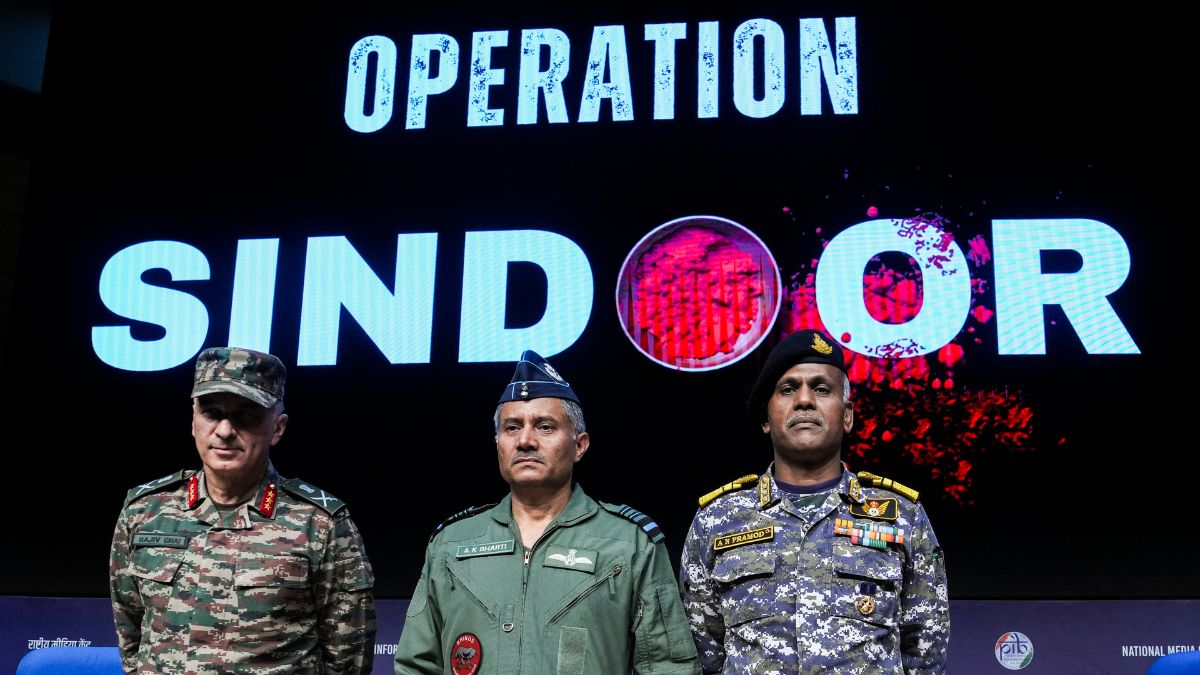It’s only been a few months since the conflict between India and Pakistan.
India had launched Operations Sindoor in May after the Pahalgam terror attack in April which left 26 dead. A ceasefire was called after Pakistan’s DGMO reached out to India.
However, Islamabad is already trying to rewrite history.
Pakistani textbooks are now telling a different tale to its students about how things unfolded.
Let’s take a closer look
Claim: India was the aggressor
According to the revised curriculum, the blame for the conflict actually lies with New Delhi . The textbooks claim that India launched a unilateral attack on Pakistan. Why would India do this? It did so by ‘falsely accusing’ Pakistan of involvement in the Pahalgam terror attack – despite Islamabad’s denials.
What actually happened
India launched strikes on terror bases in Pakistan after Islamabad-backed terrorists killed over two dozen people in Pahalgam. India struck a number of terror bases including those of the Lashkar-e-Taiba, Jaish-e-Mohammad, and Hizbul Mujahideen deep into Pakistani territory as well as Pakistan-occupied Kashmir.
Claim: Pakistan targeted only military bases, destroyed over two dozen
The Pakistani textbooks have claimed that Islamabad behaved ‘professionally and responsibly’ by targeting only India’s military posts. Islamabad also claimed a number of civilian casualties. Pakistan also claimed that its Operation Bunyan-um-Marsoos was incredibly successful – destroying over two dozen Indian air bases.
What actually happened
Pakistan, in fact, attacked a number of Indian cities including Amritsar, Jammu and Srinagar with drones and missiles. It was only India’s air defence systems that prevented mass casualties. India then responded by taking out Pakistan’s HQ-9 air defence system in Lahore and hitting targets in Sialkot and even Islamabad.
India has insisted that civilian casualties were avoided and that Pakistan’s claims are false. Pakistan’s claims of having destroyed Indian bases are also undercut by satellite imagery and photos.
It was India, on the other hand, that destroyed a number of Pakistani air bases including the Nur Khan base, the Murid base, the Rafiqui base, the Sargodha base, the Chaklala base, and the Rahim Yar Khan base – which has remained closed since then.
India also hit the Pakistan army’s headquarters in Rawalpindi. Senior Indian officers at press briefings also provided evidence of their success via satellite images and videos.
Claim: India sought peace
Amongst the most ridiculous claims was the one that it was India who sought peace. According to the textbooks, India had no choice but to do so after ‘suffering heavy losses’. It took repeated calls from US President Donald Trump to get Pakistan to agree to a ceasefire.
What actually happened
It was Pakistan which sought peace after taking heavy hits. It was the Pakistani DGMO who called up his Indian counterpart to ask for hostilities to end.
This came after US Vice President JD Vance called Prime Minister Narendra Modi and urged peace talks. However, Modi responded by warning that India would hit back at Pakistan even harder if it didn’t stand down.
US Secretary of State Marco Rubio then told Foreign Minister S. Jaishankar that Pakistan was ready to talk truce. The two DGMOs then jointly worked out a cessation of hostilities.
Though Trump took to social media to announce that he had brokered peace between the two countries, India has been firm on its stance that no third party had intervened in the talks.
Asim Munir’s promotion
To read Pakistani textbooks tell of the tale, Asim Munir’s promotion to Field Marshal – just the second in the history of the country – was a reward for his ‘outstanding performance’ during the four-day conflict.
What actually happened
Munir’s promotion was more of an optics and propaganda campaign – which Pakistan has ceaselessly waged since the beginning of Operation Sindoor.
The promotion sought to reassure the public at large that Pakistan had actually ‘prevailed’ in the conflict with India – thereby safeguarding the prominent position Pakistan’s armed forces enjoy within its society.
What is Pakistan doing?
Islamabad is taking a page out of its old playbook – attempting to rewrite the narrative of the conflict with India as it has several times over the past few decades. This is to try to convince its citizens that Pakistan could not possibly be defeated by India – despite reality and independently verifiable evidence showing otherwise.
With inputs from agencies
)